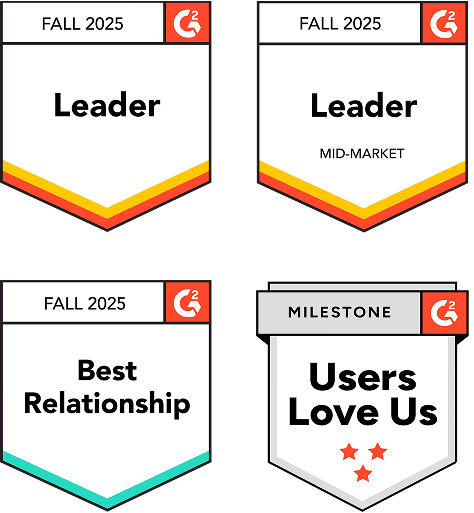Is your organization building a new facility or upgrading an existing one? If so, how you install all equipment, systems, and environments will be crucial for keeping projects on track and on budget.
This is the perfect time to introduce you to (or refresh your memory about) commissioning and qualification (C&Q). These processes are essential, helping make sure everything within your pharmaceutical facility is installed and operating exactly the way it should. That means less guesswork and fewer surprises for your validation and quality teams down the line.
This article covers the core principles of commissioning and qualification in pharmaceutical facilities. We’ll explain the most common challenges teams are facing right now, and how digital tools are making the entire validation process faster, easier, and more reliable.
Pharmaceutical commissioning and qualification
C&Q are closely related processes that help make sure facilities, utilities, equipment, and systems in pharmaceutical manufacturing meet requirements and function as intended. Let’s break each process down in a bit more detail:
What is commissioning?
When building or updating a pharmaceutical facility, commissioning checks all systems – including critical infrastructure like HVAC, water systems, and other utilities – are installed and operating according to the original design specs. This helps set up everything correctly and ready to move into the next phase: qualification.
What is qualification?
The qualification process goes a step further, making sure all equipment and systems are working properly to produce the product safely. In fact, it’s a legal requirement in the pharmaceutical industry for any equipment that directly impacts the manufacturing processes and, as a result, product quality assurance or patient safety.
It typically involves a few stages, including Operational qualification (OQ) and Performance Qualification (PQ).
OQ is essential for establishing documented evidence that the equipment works as expected within its intended operating ranges. PQ verifies that the equipment consistently meets process requirements under routine production conditions. It’s the final stage of qualification, confirming that the system delivers reliable, reproducible results.
Over time, qualification continues to check that the equipment is working well, using risk assessments to spot potential problems before they happen. This helps ensure the consistent production of products meeting defined quality attributes.
Challenges facing C&Q (and quality teams)
Getting C&Q right isn’t always easy. There are lots of moving parts, and a few common roadblocks that can slow things down for quality and validation teams. Here’s what to watch out for.
Regulatory compliance
Staying compliant with rules from regulatory bodies like the Food and Drug Administration (FDA) or the European Medicines Agency (EMA) is non-negotiable. But the truth is, these rules can change, and keeping up with those changes can be tough – especially when you’re dealing with international standards.
Handling documentation
Documentation is a huge part of C&Q. From commissioning to qualification and validation, you need to keep track of everything. The problem? It can quickly feel like you’re drowning in paperwork, slowing down the process and increasing the risk of errors.
Resource allocation
Resource management is a delicate balance. One that involves assigning the right people with the right skills to the right tasks.
For this reason, it’s not uncommon for C&Q projects to suffer. If a team is stretched too thin or lacks essential skills, even the best-laid project plans can go awry. The result? Delays and potential quality issues.
Quality risk management
From equipment malfunctions and supply chain disruptions to incorrect or incomplete data, every validation project carries risks. Risk management helps find and fix potential problems before they turn into bigger issues. The problem? Many teams overlook it and end up facing costly disruptions instead.
Data integrity
Mistakes in data entry or management often lead to compliance problems and affect product quality. But in the pharmaceuticals and life sciences industries, the datasets are massive, making consistency and accuracy across different systems and teams a major challenge.
Benefits of digital validation
Here’s how the switch to digital validation can completely change your operations for the better:
Fewer errors and inaccuracies
By automating data entry and checks, digital validation helps reduce mistakes and makes it easier to follow standard processes. This leads to more reliable data for audits, decision-making, process performance qualification, performance qualification, and compliance. Built-in error detection tools also help keep your data tidy and accurate.
Greater speed and efficiency
From collecting data to analyzing and reporting it, automating validation speeds everything up. By reducing the need for manual re-checking and cross-verifications, it saves significant time and lifts some of the burden off your team. And with real-time validation, you can spot and fix issues as they happen for faster, better-informed decision making.
Cost effective and eco-friendly
Digital validation reduces manual work, which means more productivity for employees. This, in turn, leads to lower labor costs. And adopting digital validation reduces the use of paper, virtually eliminating the expense of storing and managing piles of paperwork, making your operations more organized and more sustainable.
Audit readiness
With everything tracked and time-stamped, you’ve got a clear digital trail ready to go. Finding past records and showing proof during audits is fast, simple, and a lot less scattered and stressful.
Scalability and flexibility
The best digital validation platforms can easily scale to meet your changing demands – with no trouble. For example, if you’re adding new facilities or expanding a specific product line, you won’t need to overhaul your entire validation system. These platforms adapt and grow with you, providing continuous efficiency as your needs change.
Your more productive, reliable, and cost-effective way to handle validation
If you’re looking for a smarter way to handle your validation, Kneat might be the solution you need. Our powerful digital validation platform, Kneat Gx, optimizes your entire C&Q process, automating everything from start to finish. The result? Faster workflows, greater accuracy, and – most importantly – less stress.
Say goodbye to paper-based processes. Easily manage documentation, track real-time data, reduce manual errors, and stay compliant – all in one platform.
Explore our digital C&Q guide, or get started today and experience the difference Kneat can make in your operations.






